 by our College Data Analytics Team
by our College Data Analytics TeamDMU total enrollment is approximately 392 students.
See racial/ethnic breakdown for all students.
Male/Female Breakdown of Graduate Students
About 62% of full-time grad students are women, and 38% men.
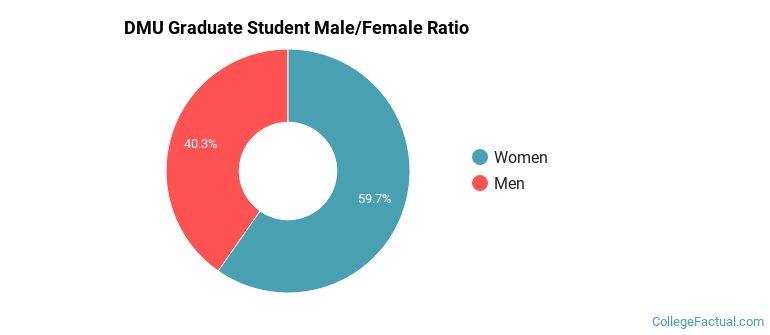
For the gender breakdown for all students, go here.
DMU Racial-Ethnic Breakdown of Graduate Students
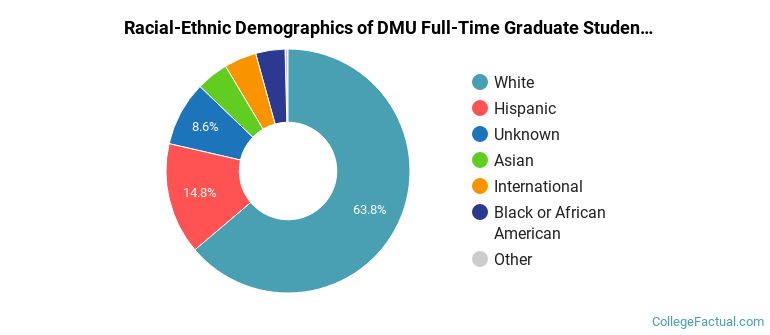
| Race/Ethnicity | Number |
|---|---|
| White | 164 |
| Hispanic | 44 |
| Unknown | 35 |
| Asian | 17 |
| Black or African American | 12 |
| International | 3 |
| Native Hawaiian or Pacific Islander | 2 |
| Multi-Ethnic | 0 |
See racial/ethnic breakdown for all students.
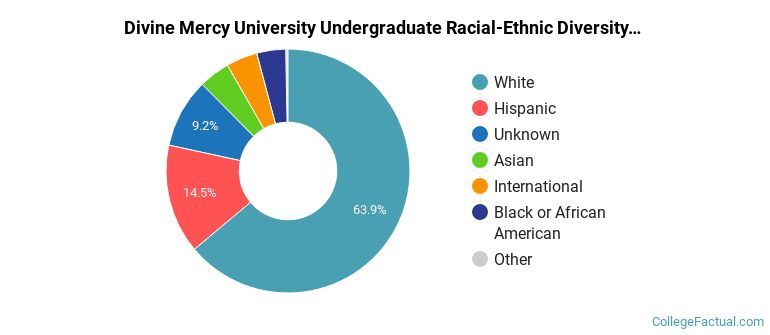
| Race/Ethnicity | Number |
|---|---|
| White | 233 |
| Hispanic | 63 |
| Unknown | 44 |
| Asian | 22 |
| Black or African American | 18 |
| International | 5 |
| Native Hawaiian or Pacific Islander | 2 |
| Multi-Ethnic | 0 |
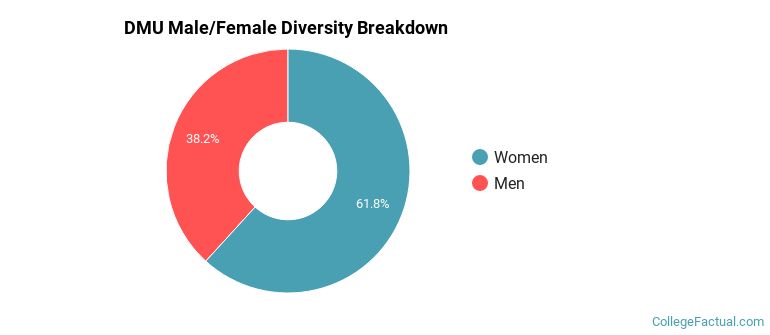
There are approximately 251 female students and 141 male students at DMU.
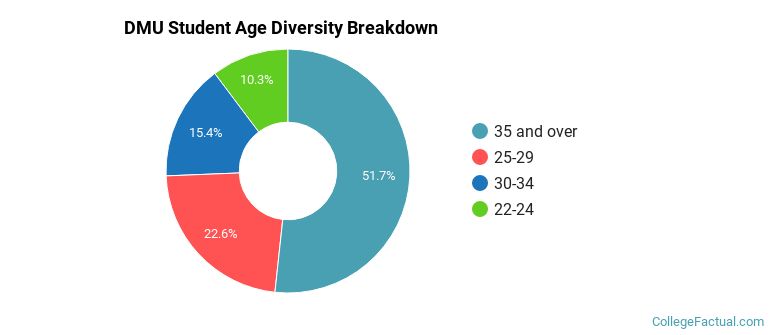
| Student Age Group | Amount |
|---|---|
| 35 and over | 121 |
| 25-29 | 53 |
| 30-34 | 36 |
| 22-24 | 24 |
| 18-19 | 0 |
| 20-21 | 0 |
| Under 18 | 0 |
Footnotes
*The racial-ethnic minorities count is calculated by taking the total number of students and subtracting white students, international students, and students whose race/ethnicity was unknown. This number is then divided by the total number of students at the school to obtain the racial-ethnic minorities percentage.
References